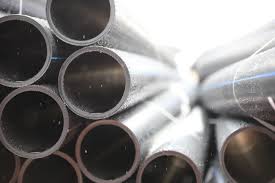Dec . 10, 2024 03:16 Back to list
Connection Solutions for HDPE and Steel Pipe Systems
HDPE to Steel Pipe Connection Service Bridging Two Worlds in Pipeline Technology
In today's rapidly evolving infrastructure landscape, the need for reliable and efficient piping systems has never been greater. Among the various materials used for piping, High-Density Polyethylene (HDPE) and steel stand out as popular choices for different applications. Each material has its advantages; however, there are times when an effective connection between HDPE and steel pipes is necessary. This article explores the importance of HDPE to steel pipe connection services, the methods used, and some considerations for ensuring a successful coupling.
The Growing Importance of HDPE and Steel
HDPE pipes are known for their durability, flexibility, and resistance to corrosion, making them ideal for water and wastewater management, gas distribution, and industrial applications. On the other hand, steel pipes are revered for their strength and ability to withstand high pressures, which makes them suitable for a wide range of applications, including construction, oil pipelines, and chemical processing.
However, in many pipeline systems, the need arises to connect HDPE and steel pipes. This is often due to infrastructural requirements, availability of materials, or the unique advantages that each material brings to the project. For instance, a pipeline might require the flexibility of HDPE at certain points while necessitating the strength of steel at others, particularly in high-pressure areas or where external forces might compromise system integrity.
Connection Methods
Connecting HDPE to steel pipes presents certain challenges due to their differing material properties. Fortunately, there are several effective methods to achieve this connection, each with its own benefits
1. Mechanical Couplings Mechanical couplings are one of the most common methods for connecting HDPE to steel. These couplings typically consist of a steel flange or fitting that can accommodate an HDPE pipe. The connection is made by tightening bolts, ensuring a secure joint that can handle pressure without leakage.
2. Fusion Welding While it is not directly applicable to steel, fusion welding involves heating the ends of HDPE pipes and then fusing them together. When connecting to steel, a transition fitting can be used; the HDPE side is fused to the fitting while the steel side employs a mechanical or welded connection. This method provides a strong bond and is particularly effective for high-stress environments.
3. Adhesive Bonding In some cases, specialized adhesives designed for pipe connections can be used. This method requires careful surface preparation and the selection of an appropriate adhesive that can handle the different coefficients of expansion between the two materials.
hdpe to steel pipe connection service

4. Flanged Connections Steel flanges can be used with HDPE pipe adapters to create a robust connection. This method involves bolting a flange onto the end of the steel pipe and using a corresponding HDPE flange. This provides flexibility and allows for easier maintenance and disassembly when necessary.
Considerations for Successful Connections
When planning an HDPE to steel pipe connection, several key factors should be considered to ensure the integrity and longevity of the system
- Pressure Rating Ensure that the connecting fittings and couplings are rated for the pressure levels expected in the pipeline. This is crucial for safety and preventing failure.
- Thermal Expansion Due to the different thermal expansion rates of HDPE and steel, it’s essential to design the connection to accommodate movement without risking leaks or breakage over time.
- Corrosion Resistance Steel pipes can be prone to rust, especially when exposed to moisture. Consider using protective coatings or cathodic protection systems to extend the lifespan of the steel components.
- Installation Practices Proper installation techniques are paramount. Qualified personnel should undertake the installation to ensure compatibility and adherence to best practices.
Conclusion
The connection between HDPE and steel pipes is a crucial aspect of modern pipeline systems. As infrastructure projects increase in complexity, the ability to effectively join these two materials enables engineers to design more resilient and adaptable systems. By understanding the various connection methods and adhering to best practices, contractors and engineers can ensure that such connections are made safely and reliably, thereby enhancing the performance and longevity of pipeline networks across the globe. The combination of the strengths of HDPE and steel opens up new opportunities in the field of pipeline technology, reinforcing the infrastructure that underpins our daily lives.
-
High-Quality PVC Borehole Pipes Durable & Versatile Pipe Solutions
NewsJul.08,2025
-
High-Quality PVC Perforated Pipes for Efficient Drainage Leading Manufacturers & Factories
NewsJul.08,2025
-
High-Quality PVC Borehole Pipes Durable Pipe Solutions by Leading Manufacturer
NewsJul.08,2025
-
High-Quality PVC Borehole Pipes Reliable PVC Pipe Manufacturer Solutions
NewsJul.07,2025
-
High-Quality UPVC Drain Pipes Durable HDPE & Drain Pipe Solutions
NewsJul.07,2025
-
High-Quality Conduit Pipes & HDPE Conduit Fittings Manufacturer Reliable Factory Supply
NewsJul.06,2025

